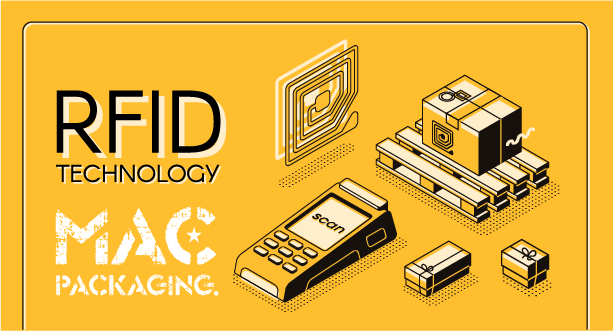RFID: Ready to Deliver
Radio Frequency Identification might sound like a strange term, but it’s actually a familiar technology we use in our daily lives — you may just not realize it. A Radio Frequency Identification tag — or RFID tag — contains a small microchip and transmitter that can relay a product’s serial number once a reader’s radio waves activate the tag.
Not convinced yet you’re familiar with RFID? Take a look below. Does anything look familiar?

As you can see, our world revolves around RFID tags. They’re used in pet microchips, clothing for theft prevention, proximity cards (work and hotel keys), and key fobs. Even Apple Pay. You with us now? We told you! RFID is everywhere.
RFID tags vs. Barcodes
For MIL-STD-129 labeling, RFID tags can be placed on cases, pallets and crates. While the shipping container may be labeled with an RFID tag, the contents inside may still have individual barcodes on them. Unlike an RFID tag, barcodes have to be scanned (like at a store) individually and at close range. An RFID reader can take in data from multiple tags, and various ranges, depending on the reader’s frequency. As you can imagine, this makes it easier for the government to store products in warehouses without having to open every container to scan the contents.
Label It!
There are two kinds of RFID tags: passive and active. We typically use the passive tag because of its convenience and lower cost. An active RFID tag is battery-operated, which costs more, and limits the tag’s shelf life. Since some products are stored for an extended period of time, passive tags are more efficient for government purposes.
RFID tags are important for the distribution process, especially inventory. Let us manage your packaging and shipping needs. It’s imperative to have the appropriate military labels to fulfill your contract with the government. You can always request a free quote.

